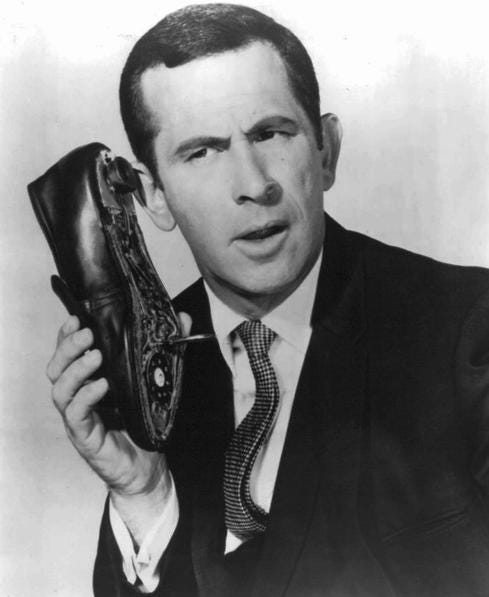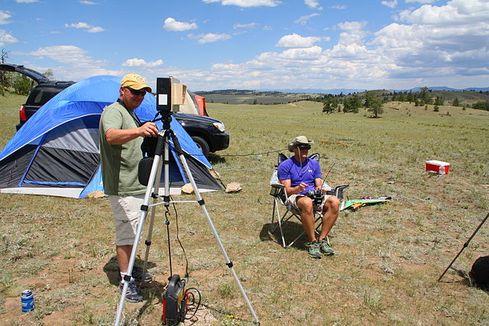FAA Rules On Drones Vs. Model Aircraft ProtestedFAA Rules On Drones Vs. Model Aircraft Protested
Proposed FAA dividing line between model aircraft and drones is too limiting to hobbyists, says the Information Technology and Innovation Foundation and Academy of Model Aeronautics.


Smartphones Of The Future: 6 Cool Technologies
Smartphones Of The Future: 6 Cool Technologies (Click image for larger view and slideshow.)
Proposed FAA rules would define model aircraft too narrowly and commercial drones too broadly, The Information Technology and Innovation Foundation (ITIF) protests in comments filed with the agency.
The Federal Aviation Administration is currently accepting comments on its Interpretation of the Special Rule for Model Aircraft, which attempts to clarify the distinction between a model aircraft and a drone. Model aircraft are minimally regulated, as opposed to commercial unmanned aircraft, a category for which the rules are still being written.
The ITIF is a prominent technology think tank, in a league with the RAND Corporation, with IT industry backers that include Google and Cisco. Google has bought a couple of drone manufacturers and is exploring how unmanned aircraft might fit into its operations. Hobbyist groups such as the Academy of Model Aeronautics are also protesting the proposed rules, but the ITIF's motivation is more to avoid choking off avenues for experimentation and innovation. The position paper makes a comparison with early rules limiting the Internet to noncommercial uses, which if not changed would have prevented the emergence of the whole online economy.
"We try to argue for policies surrounding the idea of permissionless innovation," Alan McQuinn, principle author of the ITIF's comments, says in an interview. In other words, the FAA should not create rules that prevent revolutionary applications of the technology from being created in some tinkerer's garage, he says.
[Should we worry? Read Wearables, Drones Scare Americans.]
Although the Federal Aviation Administration recently began approving the first commercial drone flights over land on a case-by-case basis, guiding regulations are required to help companies seeking to take advantage of technology understand what is and is not legal, as a rule. Under the FAA Modernization Act of 2012, Congress charged the agency with drafting rules for the commercial use of unmanned aircraft systems by September 2015. The agency has expressed confidence it will meet that deadline, although the FAA's own inspector general's office doubts it.
Meanwhile, the proposed model aircraft rule is an early indication of how the FAA will interpret the provision of the law exempting model aircraft from tight regulation and allowing them to be governed mostly by voluntary guidelines of the hobbyist community.
Figure 1:  Drone pilot with video goggles, assisted by a spotter.
Drone pilot with video goggles, assisted by a spotter.
(Image: FPV Pilot by Patrick McKay via Wikimedia Commons)
Technological advances driven by the proliferation of military surveillance and killer drones, as well as by model aircraft manufacturers and hobbyists, mean there is no longer a sharp distinction between a drone and a model aircraft. Thus the FAA considers a model aircraft to be a type of unmanned aerial system (UAS), drawing distinctions based on the size of the vehicle, as well as how it is used. A UAS consists of the unmanned aerial vehicle (UAV or "drone") plus all the remote control gadgetry.
Some parts of the law seem unambiguous. For example, in order to fall into the model aircraft category a vehicle must weigh less than 55 pounds. The FAA did clarify that the weight includes payload -- you couldn't legally operate a 30-pound aircraft carrying a 30-pound block of cheese to your picnic and claim the hobbyist exemption.
However, the rules also state that the aircraft must be operated within the "line of sight" of the pilot, and there the FAA and its critics have a difference of opinion. Model aircraft enthusiasts want to be able to use first person view (FPV) goggles, the increasingly popular accessories that allow the pilot to see through drone camera eyes. In the absence of a ruling to the contrary, groups such as the Academy of Model Aeronautics have suggested a workaround of having FPV pilots work with a copilot, or spotter, who will keep an eye on the aircraft, side-by-side with a goggle-wearing pilot. Now, the FAA is saying that its "plain language" interpretation of the law is that the pilot should be watching the aircraft with his own eyeballs.
"To ensure that the operator has the best view of the aircraft, the statutory requirement would preclude the use of vision-enhancing devices, such as binoculars, night vision goggles, powered vision magnifying devices, and
goggles designed to provide a 'first-person view' from the model," the proposed rule states. "Such devices would limit the operator's field of view thereby reducing his or her ability to see-and-avoid other aircraft in the area. Additionally, some of these devices could dramatically increase the distance at which an operator could see the aircraft, rendering the statutory visual-line-of-sight requirements meaningless."
The wording earned the FAA the scorn of Boing Boing because it could apply to even small toy drones.
Like the model aircraft enthusiasts, the ITIF sees "having someone stand on the side and watch the device as a bystander" as a reasonable safety precaution, consistent with the intent of Congress that the FAA take "community guidelines" into account.
The dividing line between hobbyist and commercial uses of small unmanned aircraft is also at issue. Again, the FAA thinks the dividing line is clearly whenever any money changes hands. The agency offered these examples:
{table 1}
Critics suggest it will be too easy to trip over that line, however. "If someone takes a picture from a drone or model airplane then sells that picture, they can be dinged with a huge fine," McQuinn said. "There is no difference from a safety perspective for a hobbyist to fly a friend a package and not charge for it, whereas if a company flies a package to the same person and charges for it, that would be illegal, they could be charged a huge fine. We argue that it's no different."
The Academy of Model Aeronautics argues the interpretation of what constitutes a hobbyist use is inconsistent with other FAA rulings and those of other agencies such as the Internal Revenue Service. "For instance, an individual who owns and operates his own full-scale aircraft for his personal pleasure and recreation is allowed to conduct aerial photography as a private civil operator whether or not he/she intends to sell the photographs. However, under the Interpretive Rule, a model aircraft enthusiast who uses his model aircraft for aerial photography and subsequently sells the photograph to an interested party is no longer considered a hobbyist. Moreover, the IRS would not allow the deduction of the operating expense and aircraft acquisition cost based merely on the sale of a photograph. The IRS will also tell you that a business that is recreational in nature and does not turn a profit over time is in fact a hobby."
The FAA declined a request for an interview with the authors of the rule, but provided a written statement arguing that it was merely providing needed clarification of how it will interpret the law, not imposing new restrictions. "While flying model aircraft for a hobby or recreation does not necessarily require FAA approval, all model aircraft operators must operate according to the law," the FAA states.
Part of ITIF's argument is that the FAA should restrict itself to regulating for legitimate safety issues and not get too far ahead of rapidly developing technologies. "Our position is we shouldn't regulate for potential harms," McQuinn said. As complications arise, rules can be devised to address them, he said.
Safety is not necessarily the only issue in play. The domestic use of drones has also provoked privacy concerns, which have been the subject of other proposed legislation. An FPV drone could fly into a neighbor's backyard and peer through the bedroom windows. Might not avoiding such scenarios have been in the minds of those in Congress who voted for that "line of sight" restriction?
McQuinn argued the language is open enough to allow the FAA to be more permissive in allowing the use of technology such as FPV. The privacy issues might not be the FAA's concern in any case. Politico recently reported that the Obama administration is preparing an executive order making the National Telecommunications and Information Administration, an arm of the Commerce Department, responsible for regulating that aspect of drone operations.
information’s new Must Reads is a compendium of our best recent coverage of the Internet of Things. Find out the way in which an aging workforce will drive progress on the Internet of Things, why the IoT isn’t as scary as some folks seem to think, how connected machines will change the supply chain, and more. (Free registration required.)
About the Author
You May Also Like






